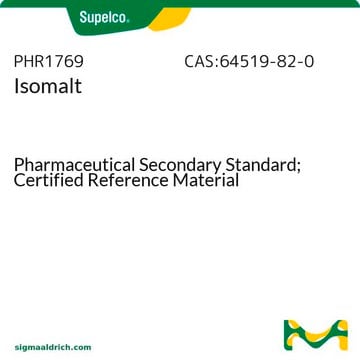613304
Chloroforme solution
NMR reference standard, 2% in chloroform-d (99.8 atom % D), NMR tube size 3 mm × 8 in.
About This Item
Produits recommandés
Qualité
NMR reference standard
analytical standard
Niveau de qualité
Concentration
2% in chloroform-d (99.8 atom % D)
Technique(s)
NMR: suitable
Taille du tube de RMN
3 mm × 8 in.
Application(s)
environmental
Format
single component solution
Chaîne SMILES
ClC(Cl)Cl
InChI
1S/CHCl3/c2-1(3)4/h1H
Clé InChI
HEDRZPFGACZZDS-UHFFFAOYSA-N
Vous recherchez des produits similaires ? Visite Guide de comparaison des produits
Caractéristiques et avantages
Quantité
Mention d'avertissement
Danger
Mentions de danger
Classification des risques
Acute Tox. 3 Inhalation - Acute Tox. 4 Oral - Carc. 2 - Eye Irrit. 2 - Repr. 2 - Skin Irrit. 2 - STOT RE 1 Oral - STOT SE 3
Organes cibles
Central nervous system, Liver,Kidney
Code de la classe de stockage
6.1D - Non-combustible acute toxic Cat.3 / toxic hazardous materials or hazardous materials causing chronic effects
Classe de danger pour l'eau (WGK)
WGK 3
Point d'éclair (°F)
Not applicable
Point d'éclair (°C)
Not applicable
Équipement de protection individuelle
Eyeshields, Faceshields, Gloves
Faites votre choix parmi les versions les plus récentes :
Certificats d'analyse (COA)
Vous ne trouvez pas la bonne version ?
Si vous avez besoin d'une version particulière, vous pouvez rechercher un certificat spécifique par le numéro de lot.
Déjà en possession de ce produit ?
Retrouvez la documentation relative aux produits que vous avez récemment achetés dans la Bibliothèque de documents.
Notre équipe de scientifiques dispose d'une expérience dans tous les secteurs de la recherche, notamment en sciences de la vie, science des matériaux, synthèse chimique, chromatographie, analyse et dans de nombreux autres domaines..
Contacter notre Service technique







